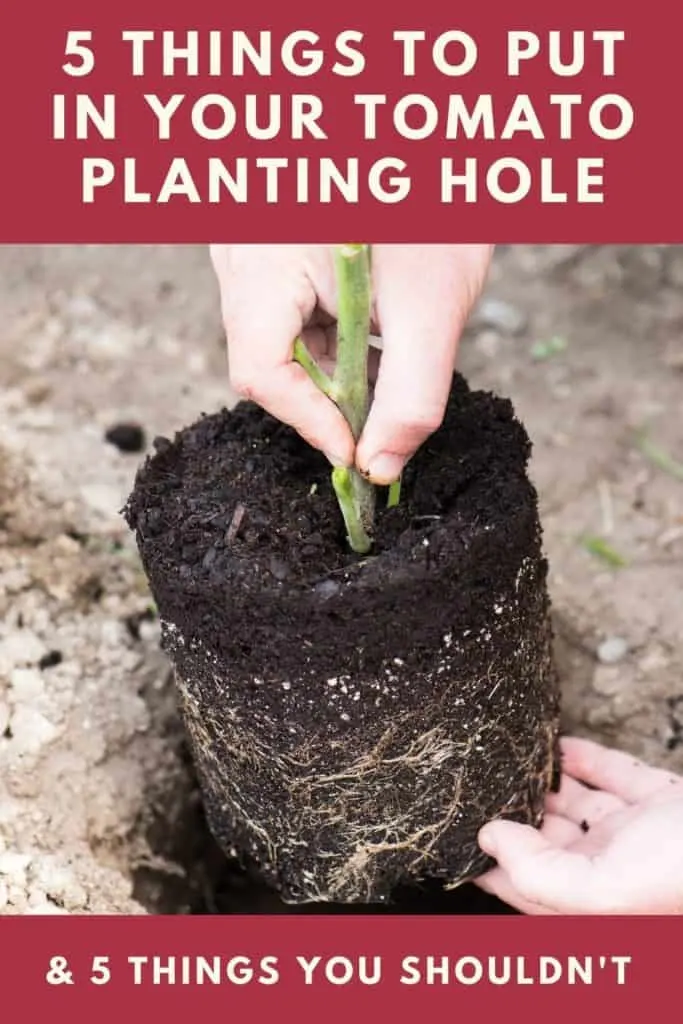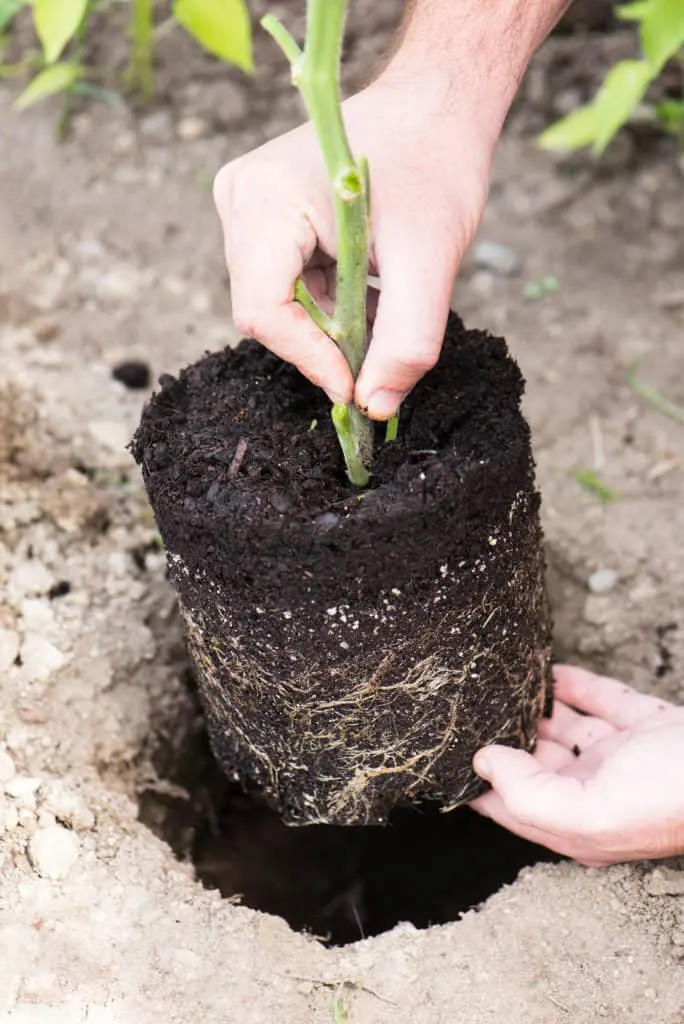
The internet is full of too-good-to-be-true gardening myths. Nowhere is that more evident than in the wild and completely unbelievable answers to the common question, what should I put in my tomato planting hole?
We all want to give our tomato plants the best start when moving them to their final home, but is a fish head really the way to do it? What about banana peels, or eggshells? Will they give you the best harvest possible, or inhibit your plants’ growth and success?
We’ve put together the definitive list of things you should, and definitely should not, put in your tomato planting hole, backed by science. Time to put those myths to bed and focus on the magic.
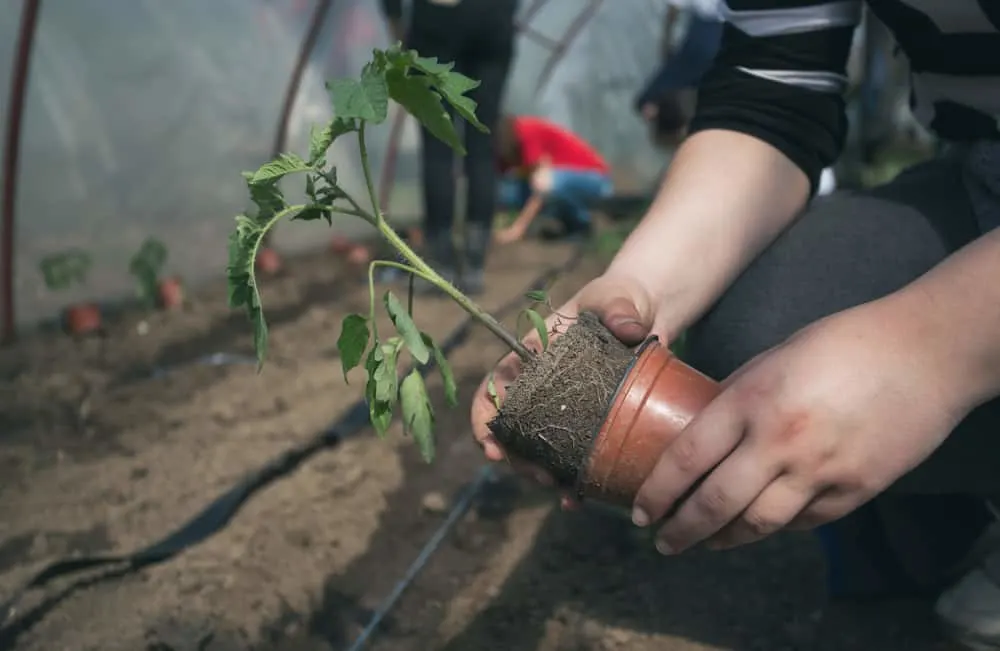
5 Things You Should Put In Your Tomato Planting Hole
1. Compost
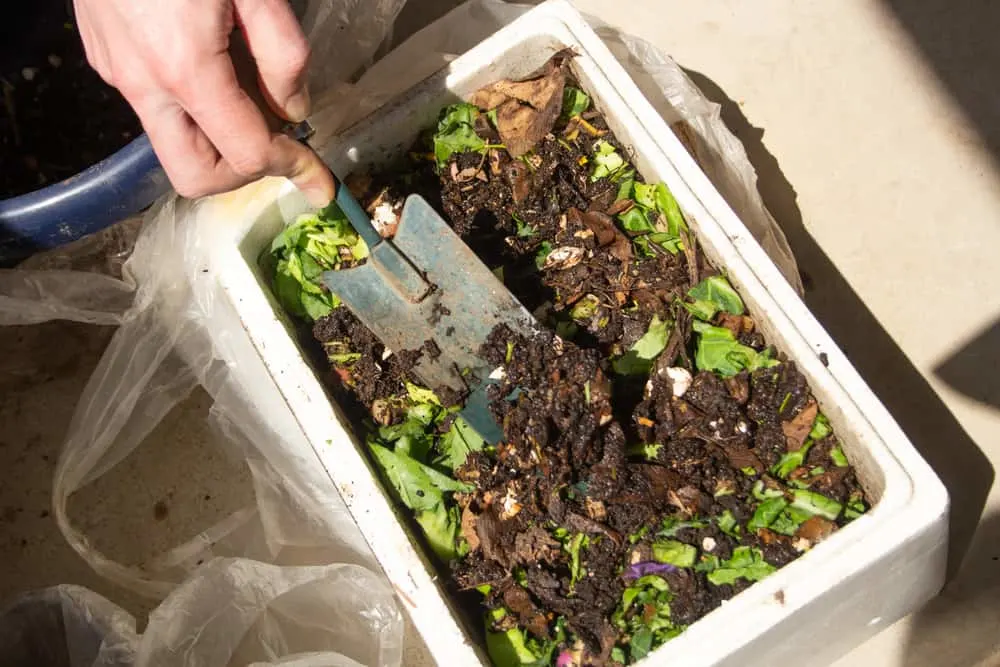
Every gardener understands the benefits of compost for all parts of the garden, including your tomato beds.
Compost enriches the soil and provides your plants with essential nutrients. It reduces the need for application of chemical fertilizers and adds beneficial microorganisms to the soil around your plants. And best of all, it’s completely free and helps the environment at the same time. You can’t go wrong.
Considering the extensive list of benefits of compost, it’s not hard to believe that it’s an ideal material to add to your tomato planting hole. Many gardeners recommend mixing compost into the soil before planting, but an extra handful at the bottom of the planting hole will give the roots the good start they need to grow bushy, healthy plants full of fruit.
2. Bone Meal
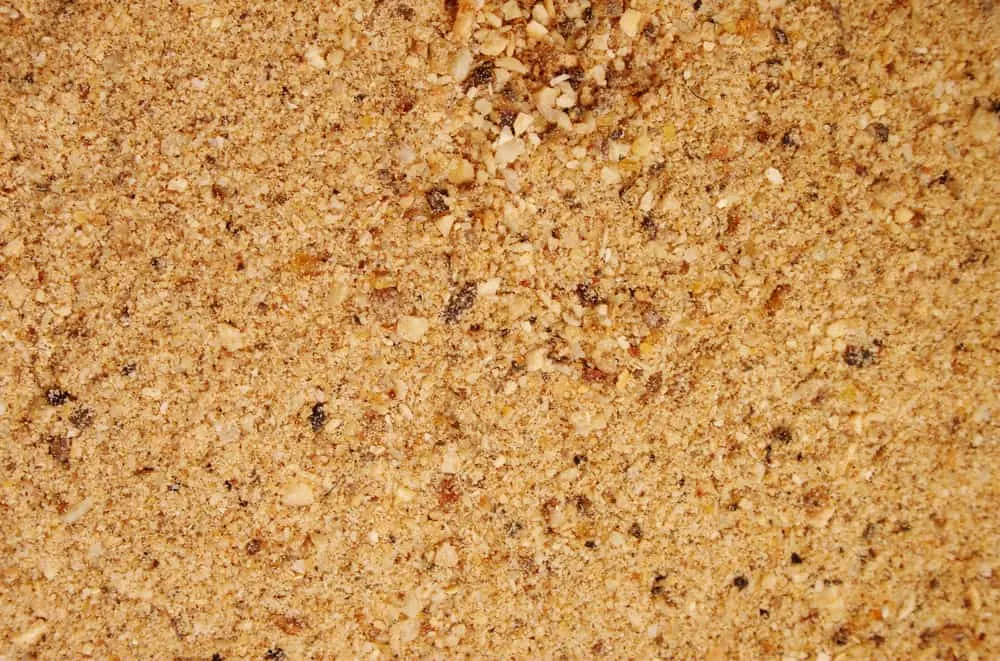
Bone meal is a powdery substance typically made from livestock and poultry bones. It is high in phosphorus, also containing some amounts of calcium and nitrogen. These properties have made bone meal a commonly recommended organic fertilizer in the gardening world.
Will it help your tomato plants? Potentially, yes.
The phosphorus in bone meal aids flowering and fruiting. As it is released slowly over time, it will be available in the soil right when your plants need it.
However, the use of bone meal is not without its downsides. If the soil is not deficient in phosphorus, the addition of too much bone meal can potentially harm your plants. It can also be harmful to pets, people, and local water sources if not used correctly. Always follow the instructions on the packaging and apply only what is needed.
3. Eggshells
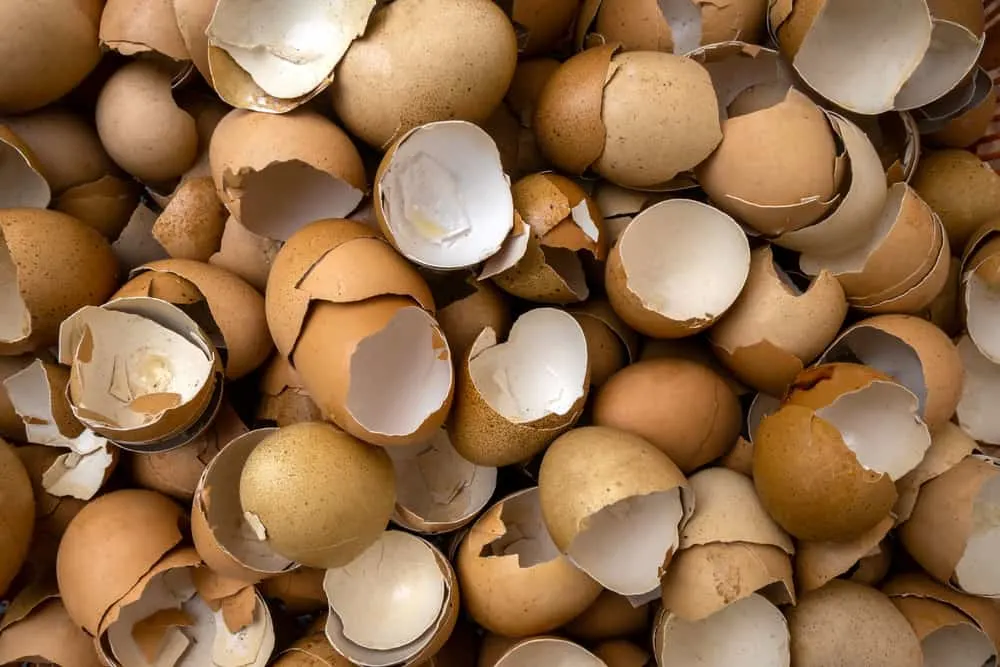
The use of eggshells in the garden is a topic marred by controversy, myth, and conspiracy. Some of the claims have an ounce of truth to them, while others have none at all. Luckily, when it comes to putting eggshells in the planting hole, it’s the former.
Eggshells are made of calcium carbonate crystals. As tomato gardeners will know, tomatoes love their calcium. Adding eggshells to your planting hole will provide a boost of calcium to the plants over time as the eggshells decompose.
Unfortunately, this decomposition takes an incredibly long time (which is why some gardeners say this step is useless). However, there is a way to speed up the process. After cleaning the eggshells by boiling them for a couple of minutes, crush them into a fine powder using a food processor or pestle and mortar. Then, sprinkle this powder into the planting hole. It’s that easy.
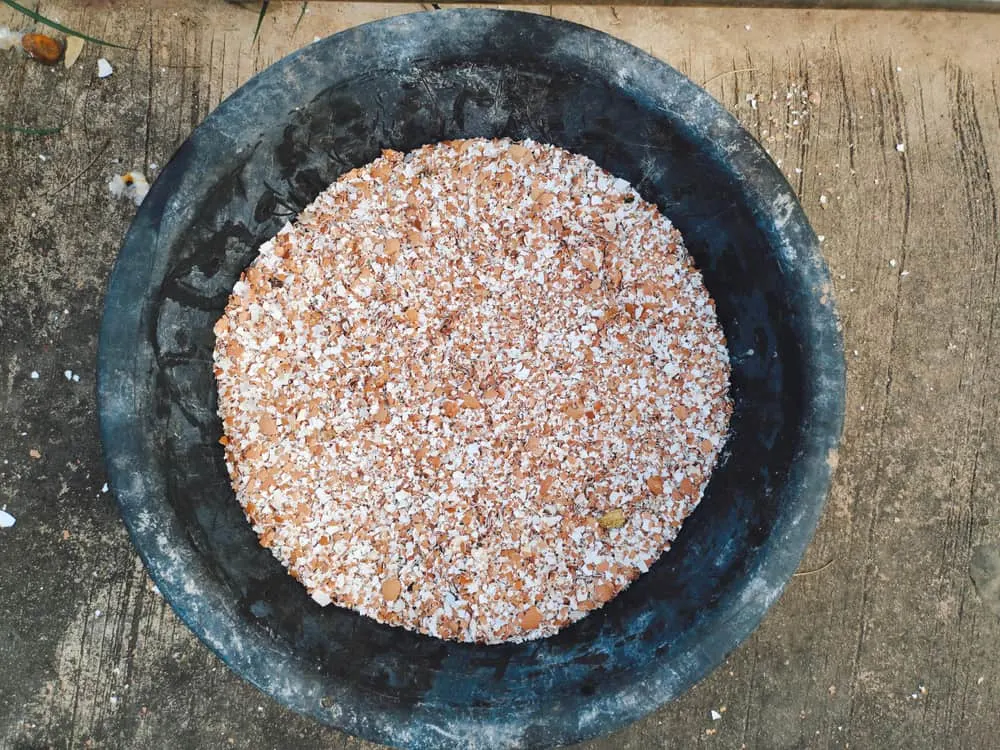
Alternatively, you can throw the shells on the compost heap for later amendments, or save them for some of the other magical gardening uses mentioned in our eggshell article.
4. Epsom Salt
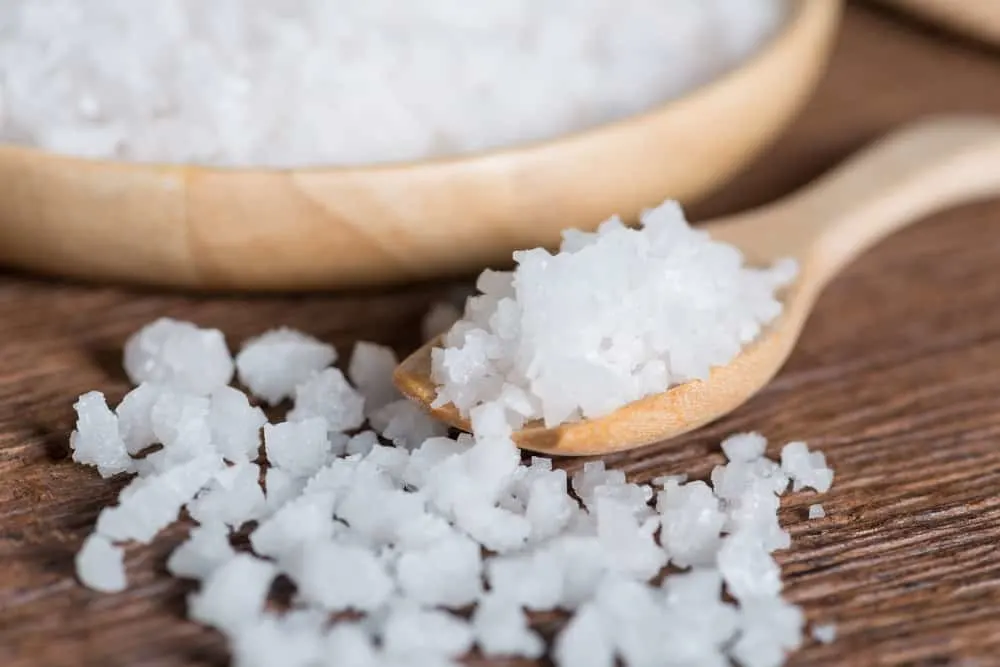
Another common suggestion, potentially the most common of all, is to add a sprinkle of Epsom salt. Epsom salt is simply another name for the compound magnesium sulfate, and it comes with a range of benefits for your tomato plants.
Studies show Epsom salt can improve the flavor of your tomatoes, boost nutrient uptake, and improve growth. If you find yellowing leaves on your tomatoes, the addition of Epsom salt through a foliar spray may also fix the problem. These benefits come from the high magnesium and moderate sulfur content of Epsom salt – both essential nutrients in tomato plant health.
However, these benefits come with a big caveat. Your soil must be deficient in magnesium for any of them to work.
When soil is magnesium (or sulfur) deficient, an application of Epsom salt can restore the levels of these nutrients in the soil. Epsom salt application to soil that is not magnesium deficient will cause a micronutrient imbalance that can create root problems or harm the surrounding environment.
Before sprinkling Epsom salt in your tomato planting hole, conduct a soil test to determine whether it is absolutely necessary.
5. Worm Castings
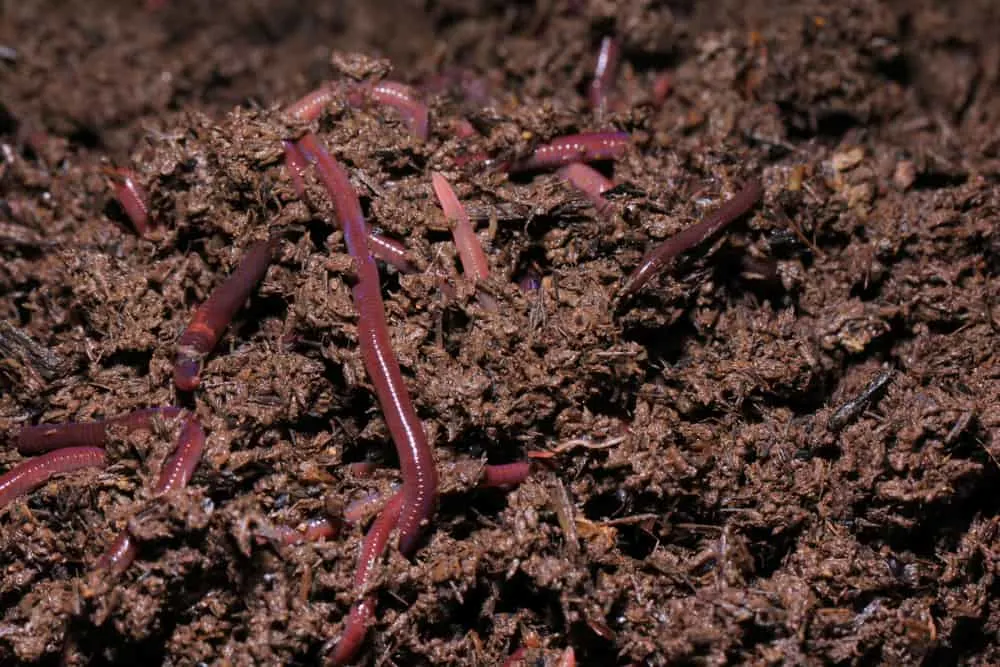
Any gardeners familiar with vermicomposting can take advantage of the wonderful benefits of worm castings. As worms digest the compost you feed them, they leave behind a substance called worm castings (basically another name for worm manure).
Worm castings are a fantastic fertilizer, full of beneficial nutrients. They also act as an organic soil amendment to improve its structure and help retain water. And, unlike other commercial fertilizers, it won’t burn the roots of your plants if used excessively.
Worm castings are the ideal natural addition to your tomato planting hole for rapid growth and healthy plants.
Instead of throwing them in the hole before planting, always mix the castings with the soil at the bottom of the hole first. A layer of castings can create a barrier between the soil and the plant roots, making it more difficult for them to anchor and grow downwards. Mix about a cup of worm castings with potting soil before adding to the planting hole, and you’ll be good to go.
5 Things You Shouldn’t Put In Your Tomato Planting Hole
1. Baking Soda
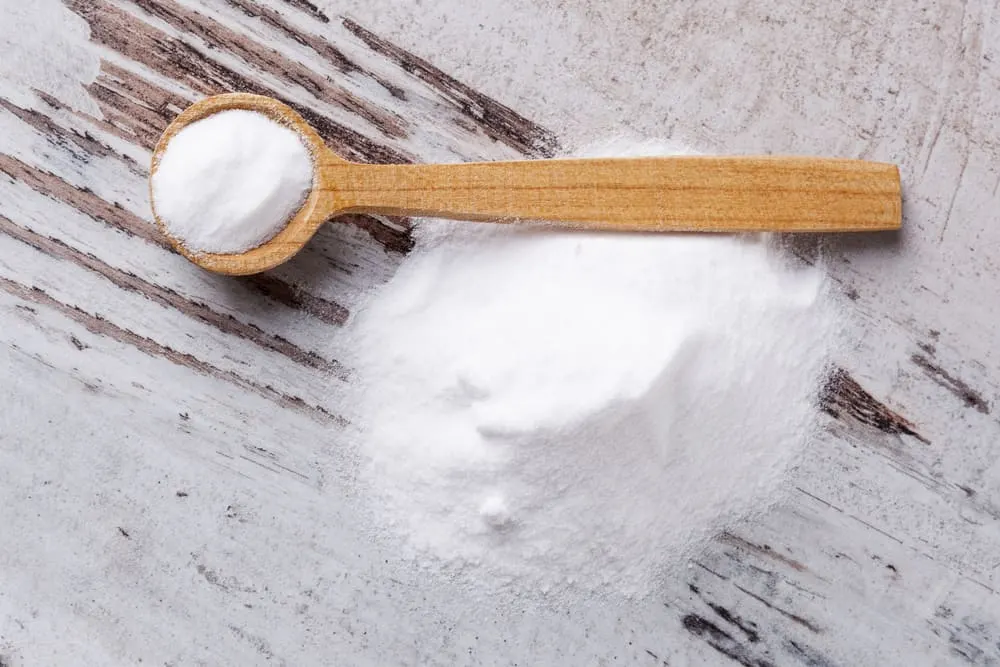
Baking soda is recommended as a remedy for a number of gardening problems from fungus to weeds, and even ants. And there is some truth to those claims – baking soda has been shown to reduce instances of powdery mildew when applied directly to the leaves.
However, in a case of taking one benefit way too far, some gardeners also suggest that the addition of baking soda into your tomato planting hole will make the fruits sweeter. There are a few proven ways to make your tomatoes sweeter and more flavorful. Unfortunately, this is not one of them.
According to this theory, baking soda will reduce the acidity in the soil as it is an alkaline substance. By reducing the acidity in the soil, you’ll reduce the acidity in the tomatoes, making them sweeter.
Alas, it’s not that simple.
The amount of baking soda needed to change the pH of your soil is far more than is safe for your plants. Plus, changing the pH of the soil won’t necessarily change the acidity of the tomatoes. Fruit acidity is a result of a number of factors – most important of which is variety – but other environmental conditions also play a role.
Your baking soda is better left in your kitchen cupboard than your garden shed.
2. Banana Peels
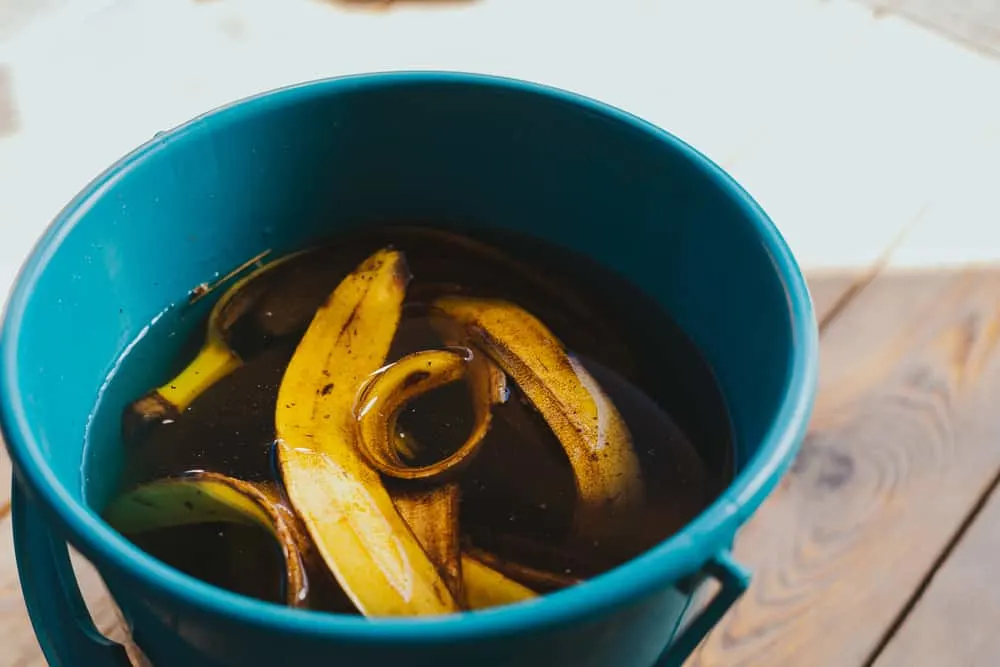
Bananas are notorious for their high potassium content. Beyond your fruit bowl, some gardeners argue this potassium content can be useful in our gardens. At face value, it seems to make sense.
Potassium is one of the three core nutrients, the K in the N-P-K acronym. But, while potassium is certainly essential for tomato plants, banana peels are not ideal to deliver it.
Firstly, in the early stages of tomato growing (when you will move them to the tomato planting hole), a balanced fertilizer of equal N, P, and K values is recommended. This is to facilitate strong overall growth before fruiting when less nitrogen is required. Banana peels have a far higher K content, with little P and even less N – not an ideal ratio for planting.
Secondly, whole banana peels are not quick to decompose. Purveyors of this myth suggest throwing a whole peel or two into the planting hole and placing the plant on top. But, since estimates show it can take several weeks or months for a whole peel to break down, all it will do in the meantime is obstruct the tomato plant roots from reaching the soil below.
You may argue that chopping up the peel or make a banana peel tea can speed up the process. But the nutrient imbalance will remain a looming problem. When searching for a fertilizer, skip past the fruit aisle and choose a more balanced option.
3. Fish Heads

One of the crazier myths out there is the addition of whole fish heads to your tomato planting hole. Yes, you read that correctly. Fish heads.
The popularity of sea-based fertilizers containing fish or kelp likely led to this suggestion.
Gardeners (who probably dabble in fishing too) swear by this method. And there is certainly some truth to it. One study conducted in 2013 tested the results of chemical fertilizers, fish offers, and manure on tomato plants, and found the fish offers produced the best results.
However, the application is of particular importance here. In the study, the researchers cooked and processed the leftover fish and left it to dry for several days. It was also applied as a fertilizer after planting, not placed in the planting hole.
While there are no studies testing the straight fish-head-in-the-hole method, it’s not hard to find some faults. The central complaint around gardeners attempting this method is pests. Raccoons are the main culprit, but there are many other small rodents that would love to get their hands on a decomposing fish. A recently planted tomato certainly won’t stop them. You’re far more likely to end up with pulled tomato plants than tall, healthy ones.
Ultimately, while fish seems to be great for tomato plant health, putting a head in the sand is not the way to do it.
4. Whole Egg
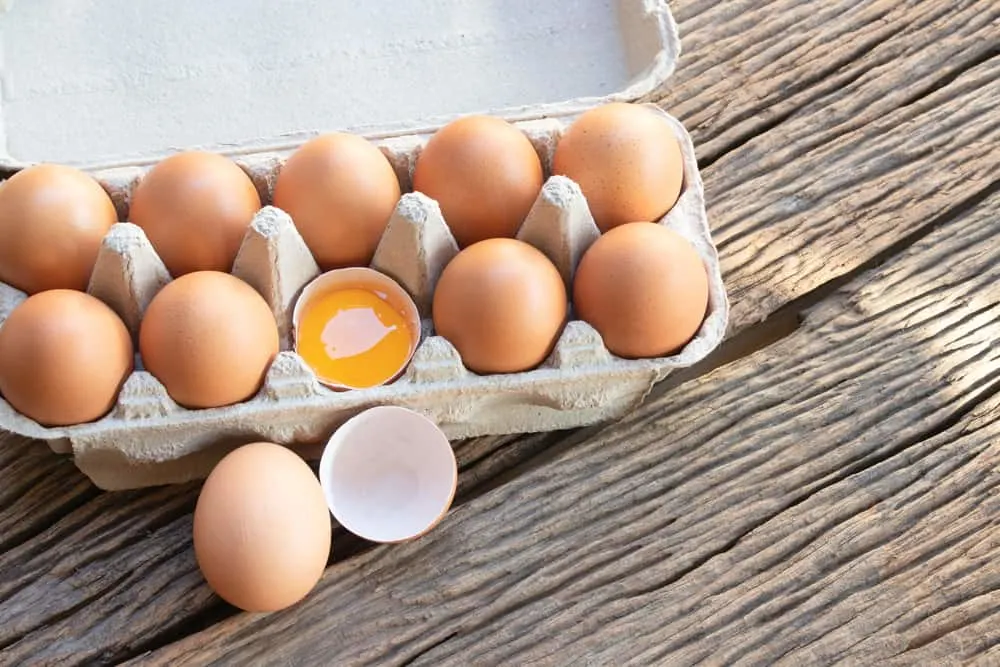
The benefits of eggshells for tomato plants have led some gardeners to suggest a slightly weirder gardening hack – adding a whole egg to your tomato plant hole.
Some sources say to leave the whole egg in the hole uncracked; others say to crack it. The method doesn’t really make a difference – it doesn’t work either way.
The main issue with the myth is the same as the fish heads. As the egg rots, it will attract a range of unwanted rodents likely to upturn your plants in seconds. Plus, rotting egg is a universally hated smell – one you definitely don’t want in your garden.
If the egg remains uncracked, it is unlikely to provide any benefits to your tomato plants in the form of calcium or anything else. As mentioned before, eggshells take an incredibly long time to break down. Place a whole shell in the ground, and it will probably still be intact come harvest time.
5. Aspirin
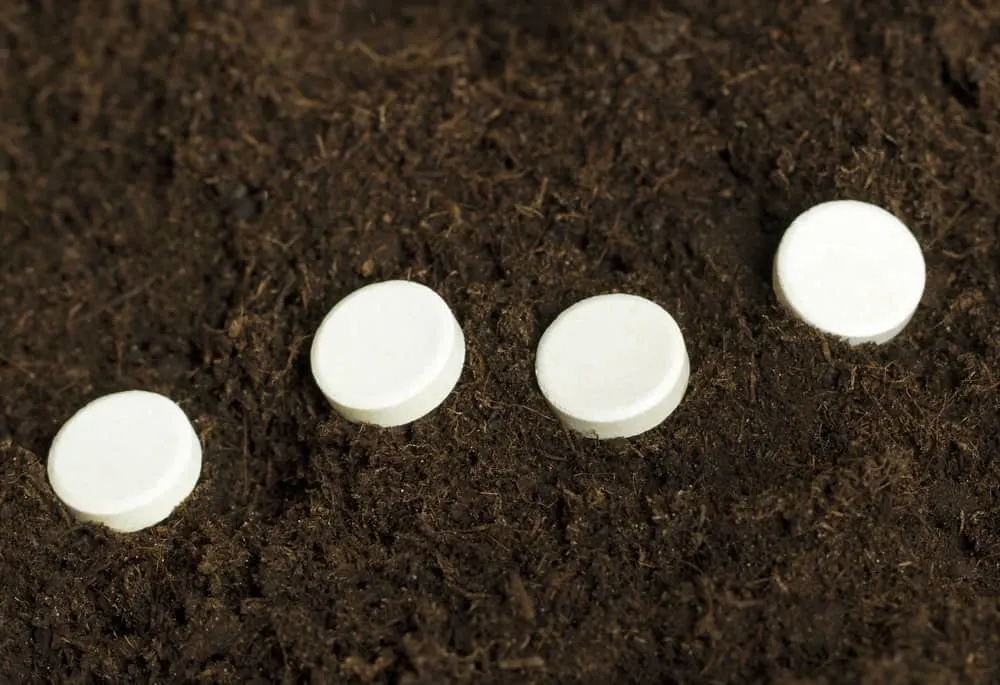
The final myth, and also the most complex one, surrounds the common headache remedy aspirin. There are many amazing uses for aspirin in the garden, most surround disease resistance. Studies have shown that aspirin can kickstart a plant’s ‘immune system’, making them less susceptible to disease.
One would think this means tossing a tablet or two in the hole before planting will have the same effect. Unfortunately, that is not likely the case.
Every study testing aspirin on tomato plants applied the compound acetylsalicylic acid diluted in water at various concentrations. The solution was then applied either to the soil or as a foliar spray. There aren’t any studies testing the addition of a whole tablet directly in the soil.
On the one hand, it may serve the same purpose as a soil drench. On the other hand, it may dissolve into the soil differently, or in targeted areas, which can potentially damage the roots of the plant.
To be completely safe, it’s best to skip this step and apply aspirin after planting using the tested methods. If your goal is healthy plants, you don’t want one silly addition in the planting hole to get in the way.
We all want the best for our new, tender tomato plants. According to scientists, compost, bone meal, eggshells, Epsom salt, and worm castings are the way to get there (with some conditions).
Baking soda, banana peels, fish heads, whole eggs, and aspirin, it turns out, are not. Always apply only what is needed to the hole based on a soil assessment – in this case, there can be too much of a good thing.
